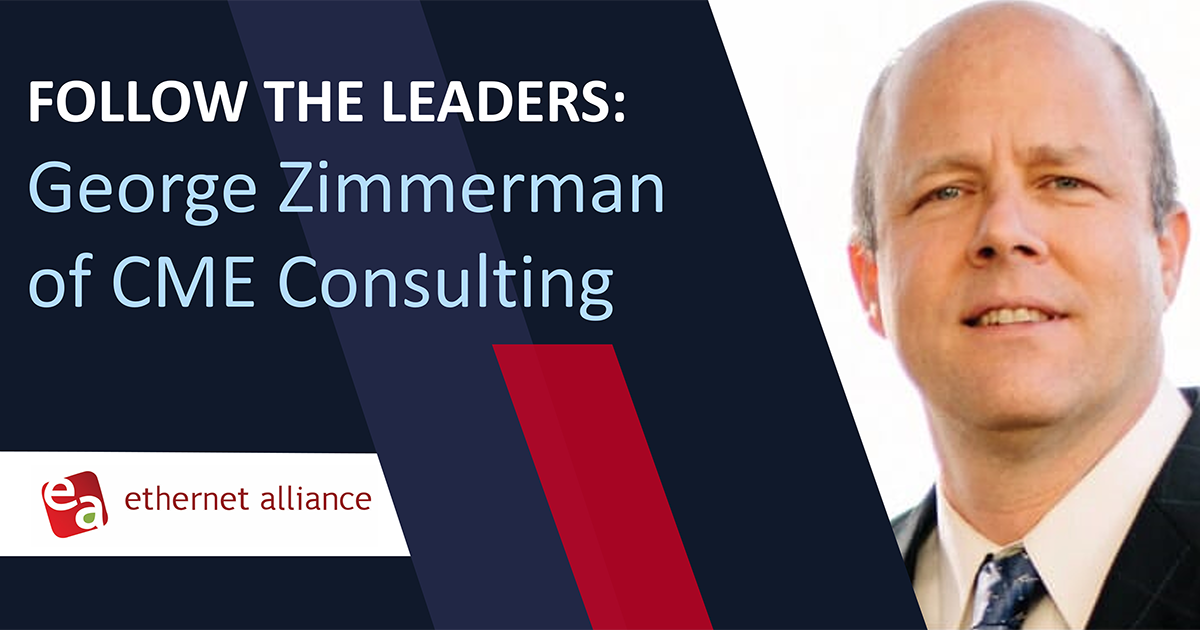Ethernet: Evolving at the Rate of Innovation
Last year, while preparing to celebrate Ethernet’s 40th anniversary, I pressed Bob Metcalfe, the father of Ethernet, to define Ethernet for me. Bob’s answer has stood out in my head ever since and is probably the best definition of Ethernet I’ve heard – “Ethernet is a brand of innovation.” Dictionary.com defines innovation as “something new or different introduced”. In my opinion, innovation is a necessary aspect of evolution, Otherwise one becomes stagnant and dies. I have always attributed Ethernet’s success to its ability to evolve in order to address a market need.
Given Ethernet’s presence in so many application areas, there are plenty of opportunities for evolution and innovation. Here are just a few examples:
- The development of 25GbE to drive the next generation of volume server deployment for those needing server performance greater than 10GbE. This effort will heavily leverage different 25Gb/s optical and electrical technologies designed as part of the development of the 10GbE family.
- Given the introduction of 25GbE, there is also discussion underway that the development of 40GBASE-T should include the development of 25GBASE-T.
- The continuing deployment of 40GbE is driving some to look at developing serial 40Gb/s signaling technologies.
- The IEEE P802.3bs 400GbE project is considering some of the following items:
◦ Chip-to-chip (C2C) and chip-to-module (C2M) electrical interfaces have adopted developing solutions based on 25Gb/s and 50Gb/s for
◦ Optical solutions that support effective data rates of 50Gb/s or 100 Gb/s. Different modulation formats, such as PAM-4 and DMT, are being considered.
◦ Forward Error Correction may be mandatory for all signaling solution.
- 1000BASE-T is a dominant enterprise interconnect structure with a large installed base of CAT-5E cabling. Discussions are underway to explore a higher speed version, such as 2.5or 5Gb/s, with some even suggesting 4Gb/s, to mimic what has happened with the selection of 40GbE and 400GbE.
- Vehicular (Automotive) Ethernet is developing 100Mb/s and 1Gb/s BASE-T signaling for use over a single twisted pair. By the end of the decade these solutions have been forecasted to ship in the hundreds of millions of ports per year.
- The IEEE 802.3 Next Generation EPON group is looking to develop a roadmap on the next generation of Ethernet PON technology to support operation beyond 10Gb/s.
Recalling the definition of “innovation”, the reader should note that there is no mention of going faster. From the examples above, it can be seen that the “innovation” being seen in different Ethernet applications is either a) leveraging existing technologies or concepts or b) introducing new higher speed signaling technologies. The IEEE 802.3 Ethernet Working Group, the Ethernet Alliance, and a multitude of other alliances clearly have their hands full with all of the efforts described above.
Nonetheless, the development community-at-large is debating the future of Ethernet’s evolution. Some are trying to draw lessons from the past. There has been considerable debate about whether the development of 40GbE was a mistake. This statement partially leverages the luxury of hindsight, while at the same time ignoring the market success of 40GbE. As the chair of the IEEE P802.3ba Task Force that developed 40GbE, I take exception with this whole train of thought. It was the correct decision at the time it was made, and the market has deployed it quite successfully, but there clearly are lessons that need to be considered given the new industry direction to develop 25GbE.
Furthermore, as we look to the future and see potential justification for the development of 40, 50, and 100Gb/s signaling technologies at the high end, we also see high volume applications emerging, which need to support higher operation rates, but below the 10Gb/s plus technologies the industry have developed over the past 15 years.
It is this overlap of industry and technology requirements that are driving an exciting time in the annals of Ethernet’s history. The first 40 years of Ethernet lived with the philosophy of developing a next rate solution of “10x the performance at 3x the cost.” That way of thinking is no more.
Such industry debates, where the future of the industry is on the line, take time. I saw this first-hand with the introduction of 40GbE and 100GbE. As the industry invests in the development of new signaling technologies, voices are becoming louder for a new industry roadmap for Ethernet. Clearly, it’s a daunting task. The Ethernet Alliance will be stepping up on October 16th 2014, as it hosts its open industry event – Technology Exploration Forum (TEF) 2014 – The Rate Debate. It will be an exciting day of discussion and debate, where through industry consensus building, a new future for the rates of Ethernet will be defined. Everyone needs to be involved in this discussion.
For more information on TEF 2014-The Rate Debate, please see http://ethernetalliance.org/the-rate-debate/.



